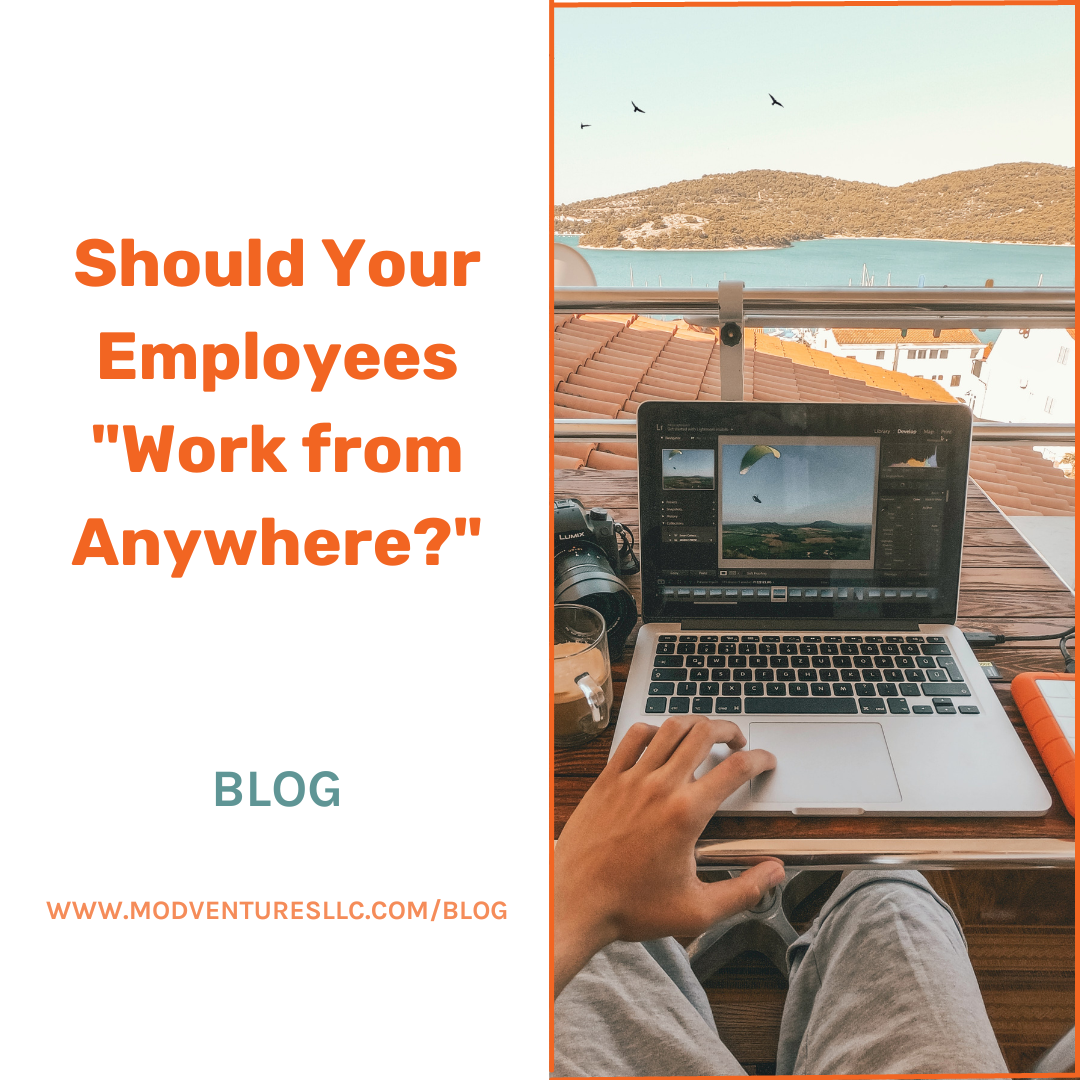While some businesses have returned to their traditional work habits of working in the office, other businesses have fully accepted the new normal of working remotely. Still, other businesses have adapted to the hybrid work structure, allowing employees to essentially “work from anywhere” be it home, office, or travel.But, should your employees work from anywhere?
Many employees actually desire a work environment that supports virtual or hybrid work models. Whether or not your business can actually accommodate these types of work models is up to you. You’ll need to consider the position of the employee, your business, your budget, and the preparation and maintenance that goes into a hybrid workforce.
Before you commit either way, let’s look at what it means for an employee to work from anywhere along with the pros and cons of the work model:
What Does it Mean for Employees to Work From Anywhere?
When you hear the phrase “work from anywhere” you typically think of working remotely with a company or business. This is one type of working from anywhere. In reality, working from anywhere can also include a hybrid work model, which is the second “version” of working from anywhere.
A hybrid workplace model mixes in-office and remote work as a way to offerflexibility and support to employees. Sometimes you, the business owner, set the in-office days vs. out-of-office days or you can trust your employees to set those days for themselves.
Working with a hybrid workforce can look like having some employees in an office all week, some employees in the office only two-three times a week, and even some employees that are working 100% remotely.
Why You Should Support a Hybrid Work Model for Your Business
Businesses that embrace the hybrid work model have noticed that their employees are more efficient in their use of time, have improved work-life balance, more control over their work hours and work location, and overall higher productivity. In workplaces where hybrid work is being monitored, employers are also able to prevent burnout by prioritizing tasks and having clear lines of communication and expectations.
Businesses that implement a hybrid work model also have higher levels of collaboration between employees and a lower maintenance costs.
Why You Shouldn’t Support a Hybrid Work Model for Your Business
As with any project or change, without proper support and planning, moving to the hybrid work model can negatively impact your business and employees. When clear guidelines and a structured plan are lacking, your employees will get the short end of the stick. They’ll be confused with their expectations, have pressure to perform but a lack of clear direction and deliverables, and can begin to feel overwhelmed and isolated.
The start-up cost of transitioning to a hybrid work model can be out-of-budget. Depending on what your employees prefer, you may still have a high expense for an office or in-person location as well as supporting your employees with their technology and programs at home.
How to Make the Transition in Your Business
First, you’ll need to have a clear understanding of what you expect from your employees. Figure out if your employee’s tasks can be completed from home or if it’s required to be in the office.
Next, you’ll want to create a plan of action on how you’re going to make the transition. What department is making the switch first? What type of support do you have or need for the transition? Are your programs ready to handle the transition and workload?
Finally, you’ll need to consult with your employees as the transition is being made. Ask them if there are any particular road blocks or struggles that they are experiencing. Ask if there are any improvements that you could make to help in the transition or to assist in their job duties.
If you’re interested in testing or transitioning to the hybrid work model for your business, but you’re not sure if you’re ready or financially able, consult with the ModVentures team today!
You May Also Love
CLOSE






